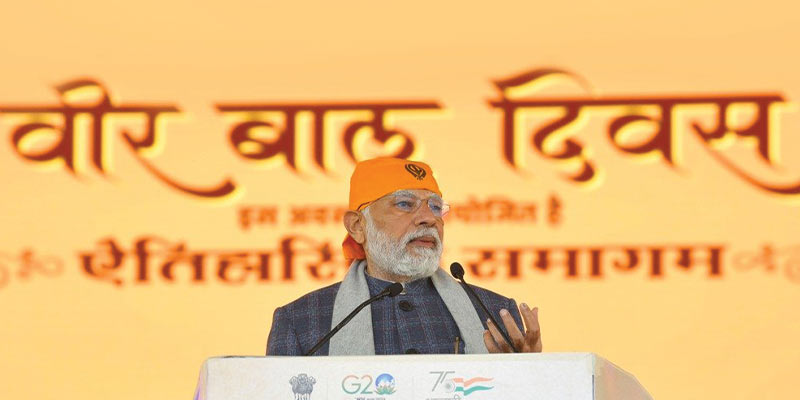- India
- Dec 26
Govt celebrates ‘Veer Bal Diwas’
Prime Minister Narendra Modi addressed a programme marking ‘Veer Bal Diwas’ at Bharat Mandapam in New Delhi on December 26.
December 26 is observed as ‘Veer Bal Diwas’ as a tribute to the 10th Sikh Guru Gobind Singh’s sons who were executed by the Mughals.
Guru Gobind Singh had four sons — Chaar Sahibzades — who sacrificed their lives for their faith. Two of his elder sons died in the battle of Chamkaur Sahib.
Key points:
• Last year, the home ministry said that the people of India, while celebrating ‘Azadi Ka Amrit Mahotsav’, salute Sahibzada Zorawar Singh and Sahibzada Fateh Singh, younger sons of the tenth Sikh Guru for their supreme and unparalleled sacrifice on December 26, 1705 at the tender age of 9 and 6 years respectively to defend the dignity and honour of Sikhism.
• It declared December 26 as ‘Veer Bal Diwas’ as a tribute of the grateful nation to the great valour and supreme sacrifice of Sahibzada Zorawar Singh and Sahibzada Fateh Singh in their quest for justice.
• The tenth Sikh Guru, Guru Gobind Singh fought against Mughal Emperor Aurangzeb, due to which he bore the wrath of the Dynasty.
• After vacating Qila Shri Anandgarh Sahib upon war with Aurangzeb, Guru Gobind Singh when crossing the swelled Sirsa River, Mata Gujri and two younger Sahibzaadas got separated.
• Mata Gujri and two younger Sahibzadas were handed over to Wazir Khan confined at Thanda Burj (Cold Tower).
• Sahibzada Zorawar Singh and Sahibzada Fateh Singh were told by Wazir Khan, the Nawab of Sirhind, to be bricked alive, after they had refused to convert to Islam.
• When Mata Gujri came to know about this she also collapsed in this place.
• The place where the two children of Guru Gobind Singh were bricked alive is known as Fatehgarh Sahib.
• The two older princes died in the Battle of Chamkaur.
• The sanctuary containing the historic wall is known as Gurudwara Bhora Sahib.
Manorama Yearbook app is now available on Google Play Store and iOS App Store

